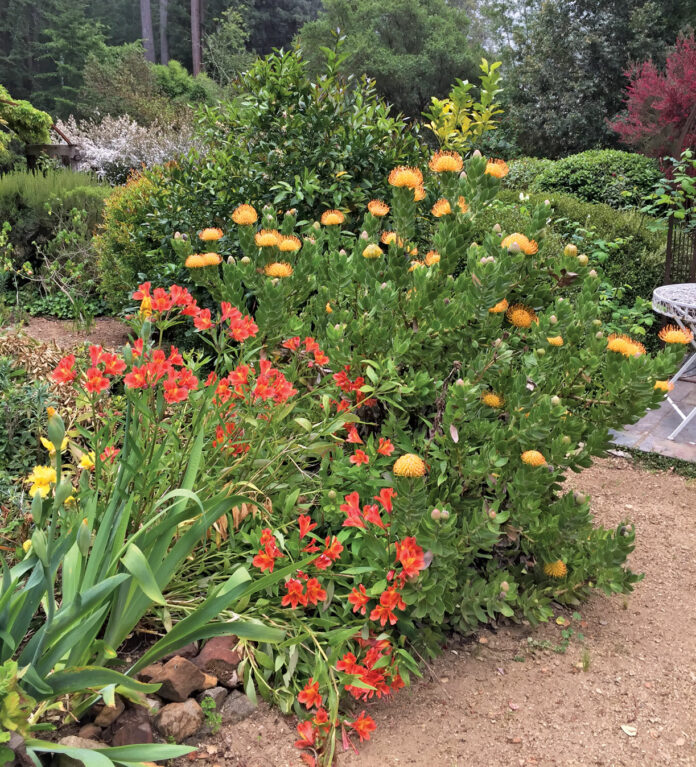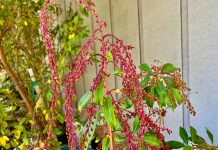You know it when you see it. That combination of plants that cry out “we get along.” Because it’s fall already after a way-too-short summer, I’m drawn to grasses and warm-toned flowering perennials.
I’m thinking of ways that will have any garden bursting with interest for the next few months. There are strategies for combining plants that are adaptable to all types of garden conditions whether you live in the sun or the shade and will also look good in other seasons of the year.
A vignette is a small group of plants that make a pleasing scene because of their complementary and contrasting features. I have several lists of good plant combinations that I regularly refer to when designing a garden. I usually start with a strong foliage plant then add other plants that have interesting texture, form or color.
When you look at a garden that you admire, it’s usually the dramatic form of one of the plants that draws you in. When you use a plant with a bold, architectural form it makes a statement. The spiky foliage of Cream Delight phormium alongside a Burgundy loropetalum would make a good combination. Or how about creating a vignette of Festival Burgundy cordyline with Annabelle hydrangea and Cream de Mint pittosporum?
During the next few months, plants begin to show soft, fall colors. Combine the fading foliage of these plants with plants that complement each other. The reddish fall color or Oakleaf hydrangea along with the pinkish-tan color of their fading flowers looks wonderful when combined with Japanese Forest Grass as it turns pink before winter. Another complementary fall combination is Royal Purple Smoke Tree surrounded by a bed of Autumn Joy sedum.
Strong colors sometimes contrast instead of blend when plants change colors in the fall. I like to tone down a combination with silver foliage. An example of this would be a plant grouping of Evening Glow phormium, sedum Autumn Joy and Glacier Blue or Tasmanian Tiger euphorbia.
Another way to create a great plant combination is by blending textures. Coral Bark Japanese maple and Plum Passion nandina work well together. Cistus Sunset with Spanish lavender and rosemary is another good combination. I also like a large mass of Blue Oat Grass and Salmon salvia greggii planted together. Santa Barbara daisy goes well with Red Fountain Grass.
My list of potential plant combinations is pretty long, as I’ve made notes over the years. Each garden has its own personality and growing conditions. A hot, dry garden might depend on a ground-cover ceanothus along with lavender while a shadier garden might use natives like heuchera maxima, iris douglasiana, yerba buena and salvia spathacea. Whatever plants you choose, let them work together to make exciting vignettes in your garden.
In a garden that inspires you the plants should be ones that you love looking at and taking care of. Some of us like the look of dark green plants while others like grasses that move in the wind. Others are not fans of succulents.
Whether you grow plants to feed the birds and attract wildlife or want a little bit of everything there’s a combination of plants that’s perfect for you and your garden.
Jan Nelson, a landscape designer and California-certified nursery professional, will answer questions about gardening in the Santa Cruz Mountains. Email her at ja******@*ol.com, or visit jannelsonlandscapedesign.com.













